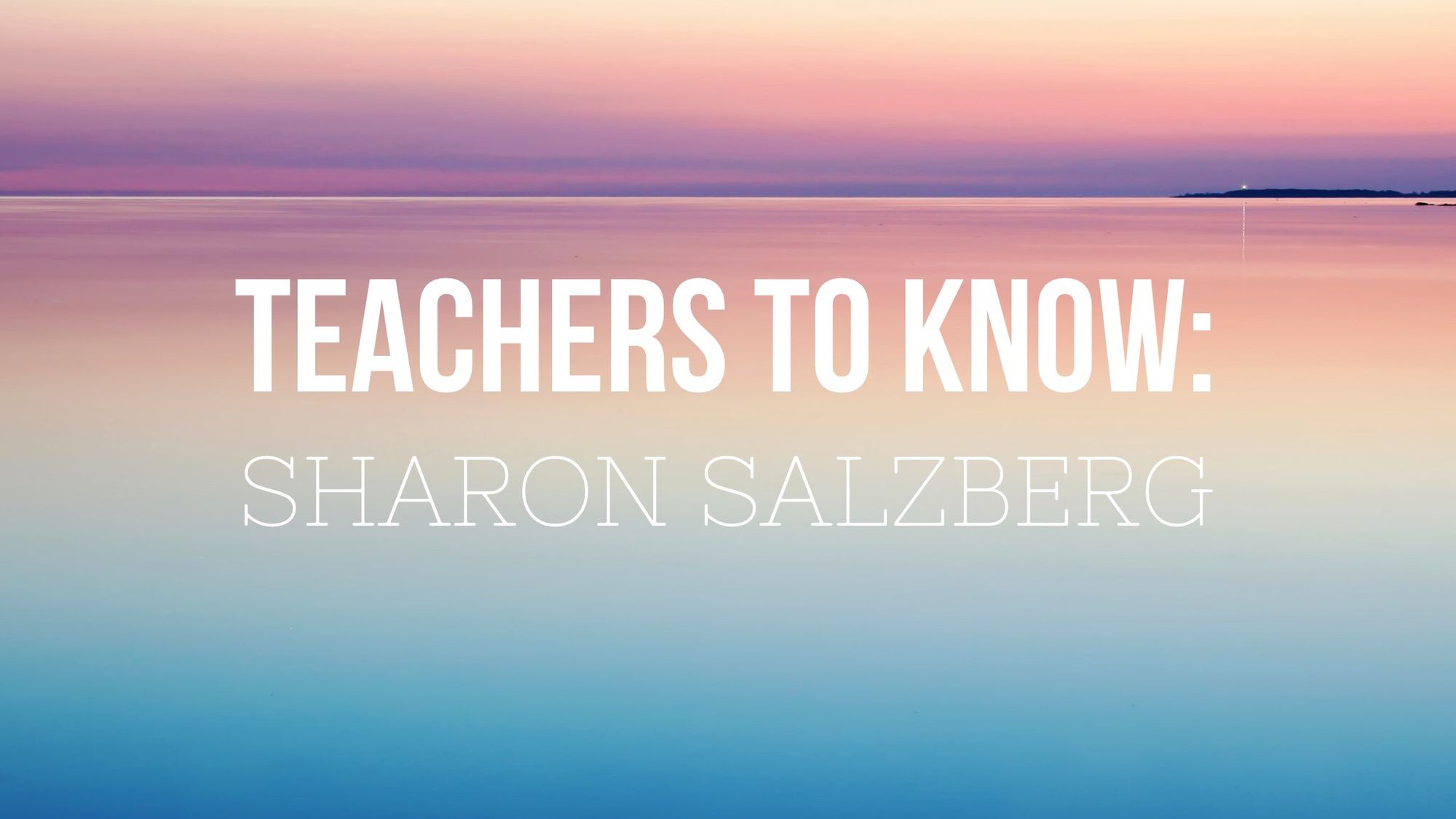Have you heard of Buddhist teacher Sharon Salzberg?
If you're new to meditation, Sharon will be one of the first teachers you'll want to follow. She's the true grande dame of American Buddhism who — along with her colleagues Joseph Goldstein and Jack Kornfield — was one of the first Westerners to bring meditation to the mainstream United States, back in the 1970s. The contemporary mindfulness movement owes so much to her.
I watched an interview with Sharon a few weeks ago, and was struck by her lightness, her realism, and her down-to-earth persona. As I've been digging more deeply into her books, her podcast, and her teachings, I am continually struck by her wisdom and grace.
This piece of hers from Tricycle Magazine is no exception. Read it for a grounded understanding of what it's like to practice in a body, whether that's a seated meditation practice, a yoga practice, or even an artistic practice akin to music or dance. Here's an excerpt:
The process is one of continually trying to greet our experience, whatever it is, with mindfulness, lovingkindness, and compassion; it helps us to realize that everything changes constantly and to be okay with that. The effort we make in meditation is a willingness to be open, to come close to what we have avoided, to be patient with ourselves and others, and to let go of our preconceptions, our projections, and our tendency not to live fully....
My view of the matter was enlarged and my understanding transformed when I realized that mindfulness wasn’t inaccessible or remote; it was always right there with me. The moment I remembered it—the moment I noticed that I was forgetting to practice it—there it was! My mindfulness didn’t need to get better, or be as good as somebody else’s. It was already perfect. So is yours. But that truth is easily forgotten in the midst of our busy lives and complicated relationships. One reason we practice is to recall that truth, so that we can remember to be mindful more and more often throughout the day, and remember more naturally. Regular practice makes mindfulness a part of us.
I especially love Sharon's reflections on using ordinary moments of our lives as opportunities for practicing mindfulness. I find myself doing the same thing — cultivating flashes of meditation on the bus, at the grocery store, walking to work — and believe that many of us can glimpse these moments of stillness and compassion throughout the course of the day, even if that doesn't look like half-lotus-style seated meditation in the midst of lives busy with child-raising and job-hustling and house-cleaning and the like:
You can access the forces of mindfulness and lovingkindness at any moment, without anyone knowing you’re doing it. You don’t have to walk excruciatingly slowly down the streets of a major metropolis, alarming everyone around you (in fact, please don’t); you can be aware in less obvious ways.
Rest your attention on your breath, or feel your feet against the ground—in a meeting, during a telephone conversation, walking the dog; doing so will help you be more aware of and sensitive to all that is happening around you. Throughout the day, take a moment to stop your headlong rush and torrent of doing to simply be—mindfully eating a meal, feeding a baby, or listening to the flow of sounds around you. Even in difficult situations, this pause can bring a sense of connection or of relief from obsessing about what you don’t have now or about what event or person might make you happy someday in the future.
Once when I was teaching a retreat, I had to go up and down a flight of stairs many times a day. I decided to make walking on that staircase part of my practice. Every time I went up or down, I paused first to remind myself to pay attention. It was useful, and it was fun. I’ve also resolved to do lovingkindness practice whenever I find myself waiting. Waiting on line in the grocery store. Sitting and waiting in a doctor’s office. Waiting for my turn to speak at a conference. And I count all forms of transportation as waiting (as in waiting to get to the next place or event), so on airplanes, subways, buses, in cars, and when walking down the street, I begin: May I be peaceful; may I be safe; may I be happy. Why not, in those “in-between” times, generate the force of lovingkindness? You’re likely to find that this weaving of meditation into everyday experience is a good way of bringing your meditation practice to life.
So good. Read the whole thing.
Sticking With It (Tricycle)
Photo by Harli Marten via WordSwap

